Space Debris and the EU’s Space Act
Brian Weimer (Partner, Sheppard Mullin) moderated a timely panel that focused on the EU’s role in space sustainability, including orbital debris and space and traffic management.
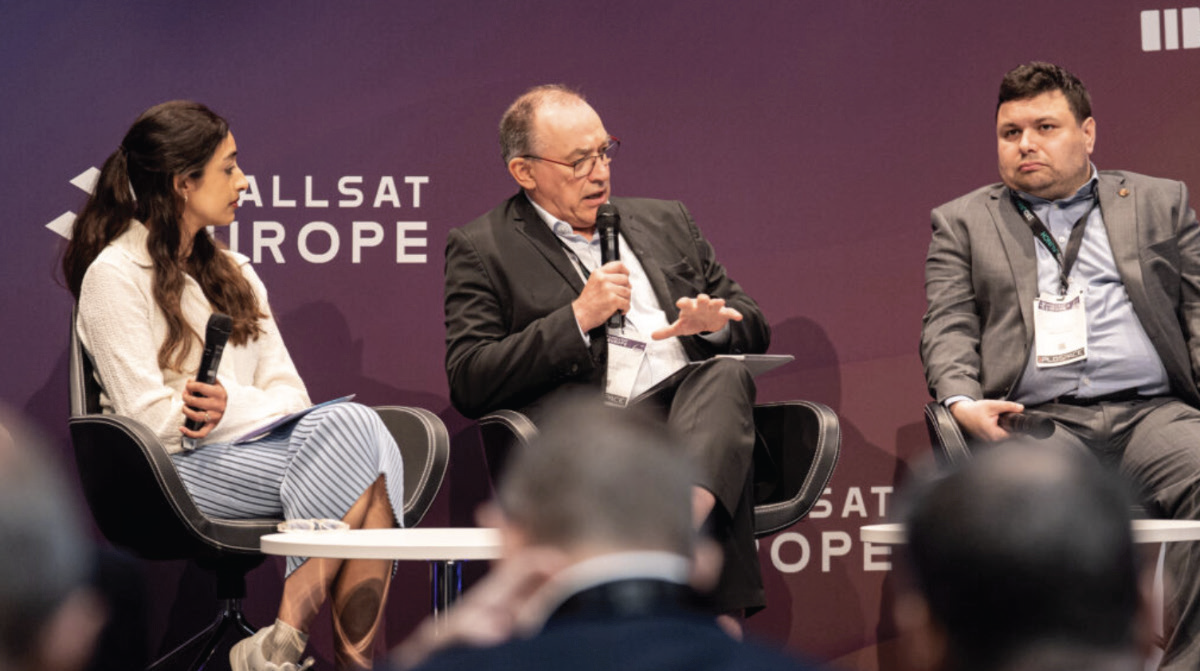
Miguel Ángel Molina (Deputy General Manager, GMV) explained for delegates that the EU’s upcoming ‘Space Act’ will contain rules that have to be followed. He stated that the new Act must apply everywhere, and with full agreement from Russia and China, and the U.S.
Daniel Bock (CTO, Managing Director & Founder, Morpheus Space) said that reliability in space was vital. He noted electrical propulsion was a slower method of propulsion, usually leading to longer spacecraft life in space and also used for on-orbit maneuverability.
Francho Garcia (CEO & Co-Founder, Arkadia Space) said he hoped the new Space Act would address both chemical and electrical propulsion, especially for de-orbiting needs.
Araz Feyzi (Co-founder & CTO, Kayhan Space) said a European set of rules is one thing, but what if another nation brought in its own set of rules?
Professor Chiara Manfletti (CEO, Neuraspace) advised that the authorities needed to be careful with their regulations and universal acceptance was necessary. Read more
Small Satellite Builders Want a Larger Slice of the Cake
Maxime Puteaux (Principal, Novaspace) moderated this panel. Novaspace is a major supplier of data and analysis focusing on upstream consulting and market intelligence related to industry.
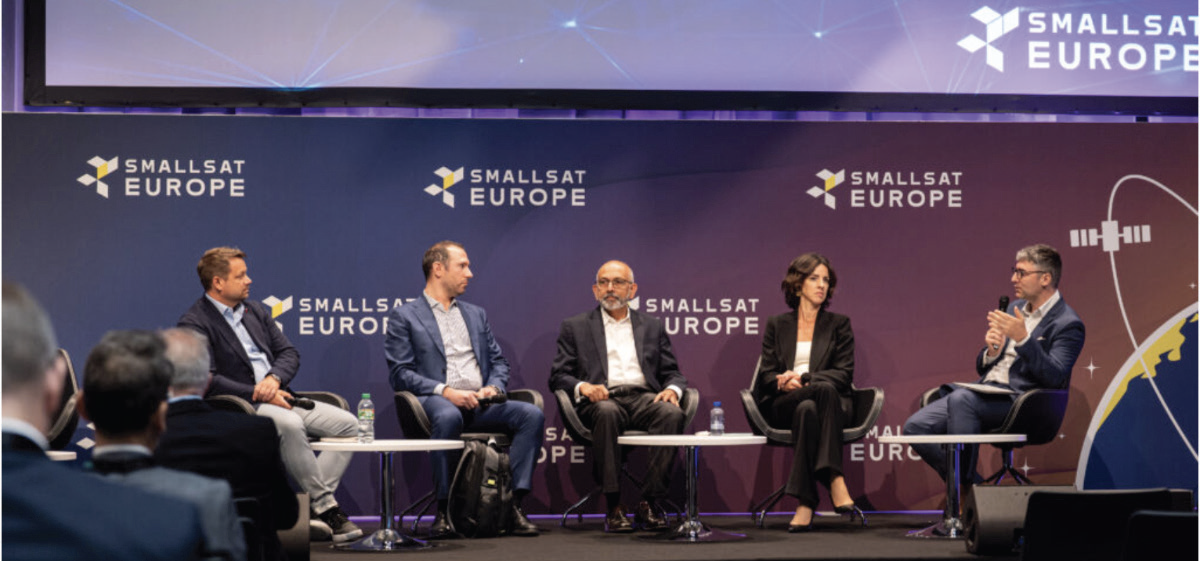
Dennis Moore (CCO, Reflex Aerospace) cautioned that government procurement was not designed with small companies in mind. For example, no small company was willing to bid in the IRIS2 project. If there isn’t a realistic alternate to the giant players, then how can small satellite providers grow?
Flavio Giudice (NCIA Space Technology Division Deputy Head, NATO) contributed to the development of NATO’s Space policies and is working on the creation of NATO’s Space operational capabilities. He said that small satellites were appealing as they can be replaced easily in the event of a threat and that NATO was going to be buying “more and more stuff.”
Dr. Rajeev Gopal (VP, Advanced Programs, EchoStar (Hughes)) added that big satellites represent juicy targets and, consequently, smaller satellites are attractive and they can be more easily updated—the demand is there.
Aurelie Bressollette (CEO, Latitude) said it was time for Europe to accelerate their procurement methods for small satellites and to recognize that small craft are resilient. read more.
Answers to the Challenges of SDA at LEO
Identifying satellites at LEO for interference Moderator Jorge Ciccorossi, Head, Space Strategy and Sustainability Division, ITU. He invited his panel to comment on the challenges of handling communications with satellites, antennas, locations and tracking these orbiting objects while at the same time coping with interference—whether deliberate or intentional. Mr. Ciccorossi’s team at the ITU is dedicated to monitoring and ensuring the effective and precise deployment of satellites in geostationary and non-geostationary orbits in conformity with the Radio Regulations, as well as the treatment of cases of harmful interference affecting space services.
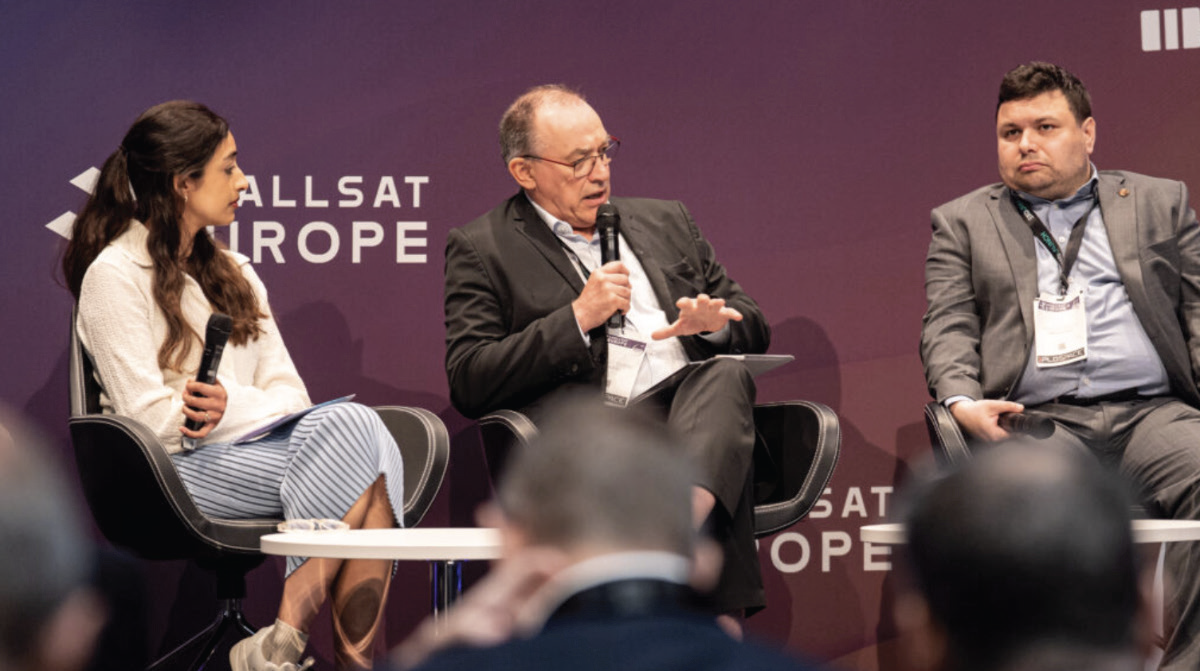
Dr. Mekhi Dhesi (Account Executive, Slingshot Aerospace) told delegates that, as well as more than 11,000 working satellites in orbit, there is also the major problem of tracking debris. She said that mixing ground-based observation and mixing RF and radar is helping, and progress is being made but the debris problem is a worry. She added that Slingshot captured the light from a target satellite and created what she described as a ‘fingerprint’ which helped minimize incorrect identification.
Slingshot was gathering more than one million observations daily and is now using AI (‘Agatha’) to help ingest and use machine learning with identification and in particular identify a potential ‘wolf in sheep’s clothing.’
Radim Badsi (CEO and Co-founder, Groundspace) said one of the key problems was the number of different satellites that shared the same frequencies. This shared spectrum, especially when one considers humidity and other weather-related problems, needs specific handling.
“Think of the problem as if we were all working in a crowded room, but everyone was shouting. Nobody would be understood. One method is to ask everyone to speak softly. This, I believe, is the ITU’s role where frequency sharing is in use. But it is a challenge.” Badsi also said that it was no longer possible to rely on operators to self-regulate. Some players no longer ‘play nice’. The authorities should ensure compliance.
Bruno Dupas (VP/Business Development and Sales, Kratos Space) said there is even interference between some Non-GEO constellations themselves. Mr. Dupas said there was a huge difference between Geo and LEO, not least of which is the altitude of a LEO craft and that spacecraft’s speed passing over a region of country. “But the magnitude of the[identification] problem for LEO is much, much greater than with GEO.”
Keynote: Steve Collar Chairman, SWISSto12
Steve Collar welcomed the SmallSat participants to Amsterdam in the Netherlands as he has been a Dutch resident of 25-years.
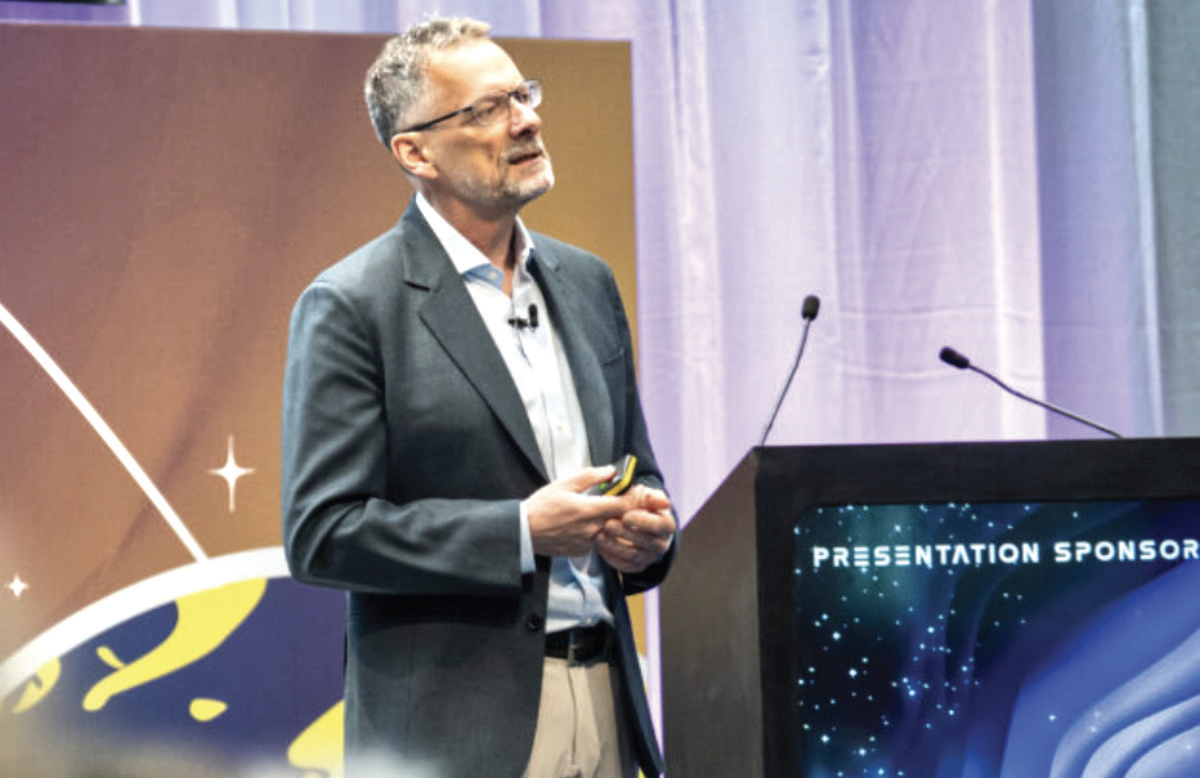
He explained how his new role at SWISSto12 had come about and what the company offered. He was previously the CEO at SES.
Collar told delegates that the industry that everyone in the room was involved in was ‘cool.’ He noted that SWISSto12 was on a terrific journey, with 40 patents in its portfolio and was the first emerging player to win a contract to get a satellite to GEO. He said that making the company’s satellites smaller, less expensive and, thanks to 3D additive manufacturing, helped propel the business.
However, he said that broadcast, and DTH in particular and a key revenue earner for satellite operators, was absolutely in decline, with broadcast revenues for the satellite industry peaking in 2015.
He suggested that industry mergers and acquisition activity was profound although some of the marriages had yet to settle down.
“I think Direct-to-Device offers tremendous potential, although in my view satellite is not likely to replace ground-based connectivity.” He said that every nation on the planet now better understands that satellite solves their demand for sovereign independence. Read more
Optical Communications for the Next Generation of Space Networks
Torsten Kriening (CEO and Publisher, SpaceWatch.Global) moderated the Optical Communications for the Next Generation of Space Networks and he heard from his panel that laser-based, direct-to-ground was likely to be solved within the next 5 years.
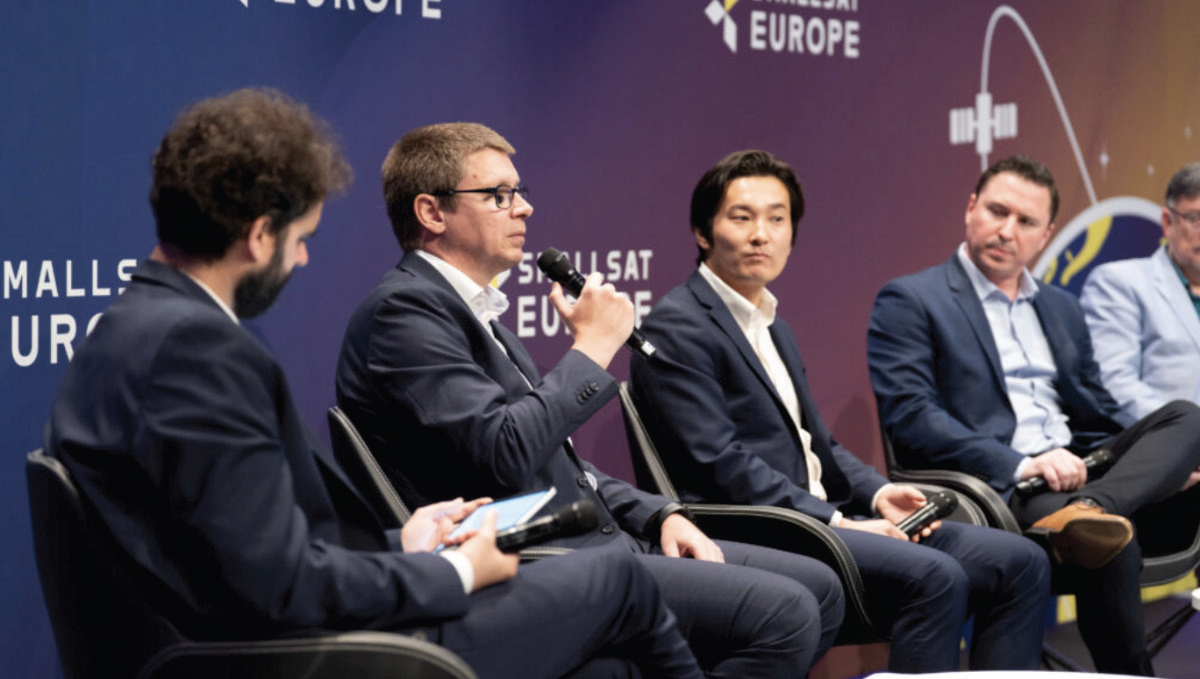
Daniel Troendle (Head of Sales EMEA, Tesat-Spacecom GmbH & Co.) told delegates that connectivity was key, and this was not currently possible from a single vendor.
Dr. Jean-François Morizur (CEO, Cailabs) who said that once it was getting the data through the atmosphere that was the critical part, but that has now been solved, thanks to years of effort.
Hirokazu Mori (Group Chief Strategy Officer / CEO of USA, Warpspace) said his company is solving communications between different operators and technologies, communicating from MEO to LEO. Higher orbits means more data.
Gregg Burgess (VP/Space Systems Division, General Atomics Electromagnetics) said that interoperability is the greatest challenge today. The U.S. SDA is focused on LEO to LEO and the next stages will be more complex in terms of the terminals as we move to MEO and GEO
Dr. Jordan Vannitsen (Co-Founder and CEO, Odysseus Space) said the problem being solved is using laser connectivity from satellite to Earth. Read more
Finding Your Project’s Cash
Dara Penahy (Partner, Millbank LLP) told delegates that—at Q1—the sector was about 10% up on private equity raising when compared with 2024. But it seems everything has changed in the past couple of months, and the Trump administration seems to have helped the cash flow toward Europe and away from the U.S. This is generating a significant amount of interest in European activity, he said.
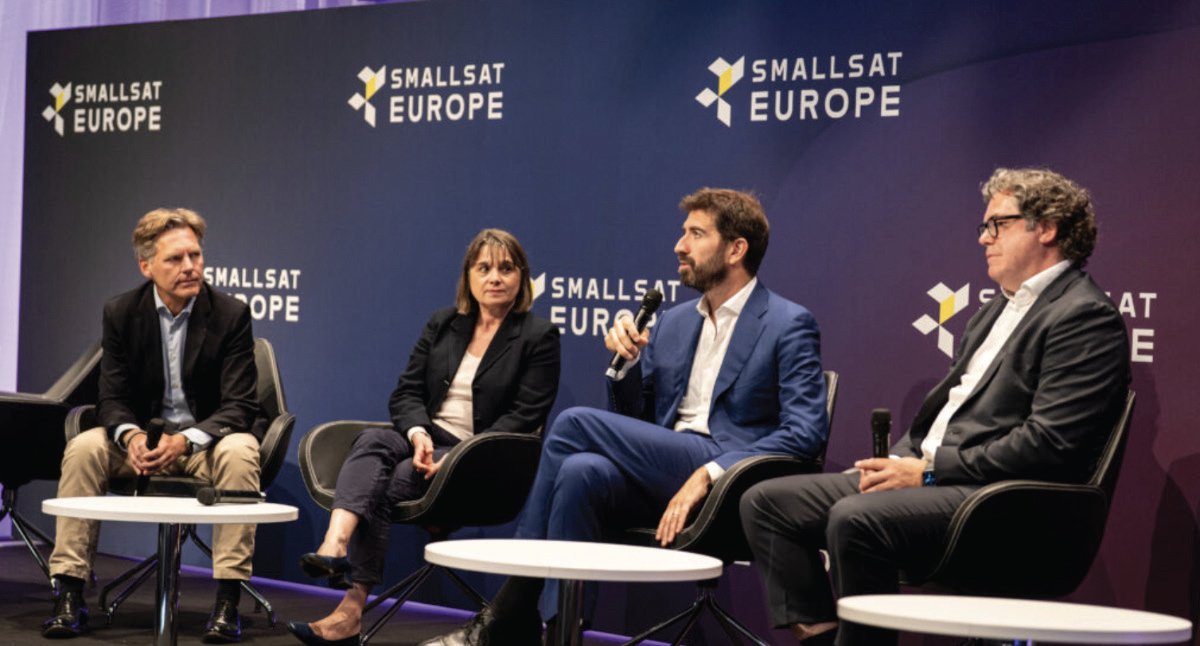
Sandrine Bedat (Deputy Head of the Defense, Shipping, Space, Telecom Unit, BPI France) said her bank supported the export prospects of a business, especially if a conventional commercial bank was reluctant to embrace long-term financing. Her portfolio has included the space sector for 22 years and most of the related French export credits supported over the period, whatever the financing structure.
Wim Steenbakkers (Managing Director, ING Wholesale Banking) said that little has changed in terms of the usual due diligence, but when commercial banks suffer and retreat, funding takes precedence over satellite building or launching plus the technology is changing fast and this gives opportunities, especially in Earth Observation.
Dr. Gianluigi Baldesi (Head of Ventures and Financing Office, ESA) said that over the past 35 years, the ESA financial model had changed. Initially, it was innovation and R&D, but nowadays, with an increasingly vibrant sector, ESA was supporting market growth in terms of new business.
Anders Bohlin (Lead Economist - Digital Infrastructure, European Investment Bank) said the EIB took a long-term view of the market. Today, the bank looks at small ticket items, in the €10 to €20 million range. Mr Bohlin has also contributed in defining new financial instruments for digital infrastructure jointly with the European Commission, national promotional banks and the private sector. He added that his institution is the biggest financial player in their sector Europe, but there should be more of us.
The panel discussed IRIS2. Steenbakkers said that first there needed to be solid contracts in place. There will be a highly detailed technical due diligence aspect for the project.
Sandrine Bedat agreed and said nobody knew anything about IRIS2, but did not doubt that lenders would be present once the project’s details were known. The earlier those details were known, the better, and the length of the terms the loans needed. Read more

